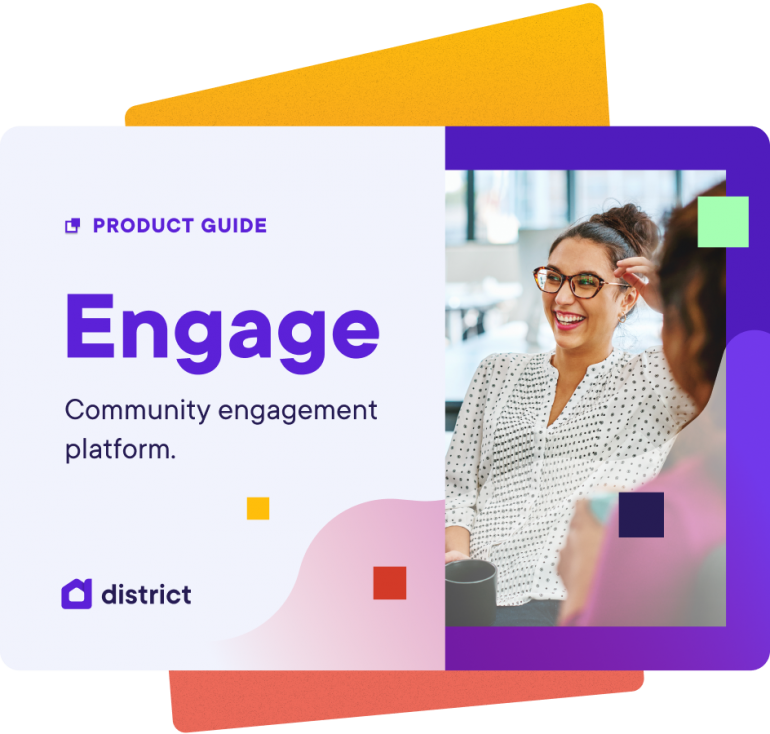Advocacy lies at the heart of every effective NGO's mission.It's a powerful tool that enables organisations to create positive change, engage communities, and champion causes close to their hearts. But sometimes, no matter how well-intentioned, advocacy risks pushing a particular agenda.
Can advocating for something disempower the very communities we seek to help?
In this article we’ll explore the concept of advocacy, and look at some of the positive and negative impacts of advocacy, and examine whether community engagement practices can be useful here.
What is advocacy?
An advocate is someone in a position of power, funding, expertise, or authority who champions or protects the interests of an individual or a group of people, often on behalf of people who lack those resources.
While an advocate can be an individual or a group of passionate people, committed to a cause, it can also be someone who develops the knowledge, skills, and training to advocate for their own interests.
Because of the limited resources of government and government organisations to address the needs of all members of the public, community advocacy groups often work to address government shortfalls in funding and resources, infrastructures priorities, or changes to government policy. As such they play a vital role in promoting the interests and amplifying the voices of marginalised groups.
Advocates for an NGO or charity group, for example, will actively promote campaigns, organise at a grassroot level, and run public awareness campaigns
For local NGO, Positive Change For Marine Life, advocacy takes the form of “empowering communities to take action for the ocean”, with initiatives to tackle marine pollution, rewild rivers, and manage sustainable fisheries across Australia, India, and the Solomon Islands.
Through their social media platforms, merchandise and events such as community clean-up drives, educational workshops and a presence at popular music festivals, the NGO educates the community, generates public support and drives change.
What’s the difference between advocacy and lobbying?
It’s important to be aware of the difference between advocacy and lobbying. While advocacy is a strategic approach to driving change on behalf of a community, lobbying is usually done for a fee on behalf of third parties.
Sounds great, but what’s the catch?
While advocacy groups work to drive meaningful change and empower marginalised communities, it’s important to recognise that not all advocacy is beneficial. In fact, some types of advocacy can actually be harmful.
Despite best intentions, some advocates might, unconsciously or unintentionally, take actions that patronise, undermine and disempower marginalised groups.
How can this happen? Unfortunately, this is the consequence of relying on assumptions or stereotypes, or failing to include marginalised groups in key decision-making processes.
How to avoid this?
The best way to avoid what’s known as paternalistic advocacy is to shift your focus, and work with communities, rather than advocate for them. It can be useful to consider community engagement principles as a guide here: foster genuine relationships and open dialogue, understand the complexity of the issues through deep engagement across the community, and ideally, encourage the co-design of solutions with community stakeholders.
Build capacity
“Give a man a fish and you’ll feed him for a day, but teach him to fish and you’ll feed him for a lifetime.” It’s an oft-quoted saying, but it’s useful to illustrate the difference between advocating for, and working with, a community. Instead of addressing short term, basic goals, aim to work with the community to build their capacity.
Local NGO, Positive Change for Marine Life demonstrated this strategy when they provided equipment to villages in India and the Solomon Islands that converts ocean plastic into recycled products. Not only does this empower these communities to manage the problem of ocean pollution themselves, but also builds a potential revenue source for recycled plastic products into the future.
Advocacy and community engagement
So how can community advocates harness the power of community engagement practices to help build the capacity of the communities they represent? Consider the following steps as informed by the IAP2 Public Participation Spectrum:
1. Take a Pulse Check
Begin by listening to the community’s concerns around a particular issue or problem. Bring in voices from a diverse range of community groups and stakeholders to understand the problem from a variety of perspectives.
2. Engage
The next stage is to undertake a community engagement campaign. Raise awareness through a communications strategy, and ensure your campaign incorporates a variety of channels to gather feedback and insights from the community taking care to ensure that you reach out to marginalized groups. Consider using a variety of participation tools such as surveys and quick polls, Q&A discussions, interactive mapping tools, and events such as virtual and town hall forums. The more tools you use, the greater the participation rate will be. Consider a hybrid approach and use online tools alongside in-person activities to boost your outreach efforts. Digital engagement tools are particularly useful for their reporting and analytics capability. When the feedback has been received and analyzed, use the insights to inform discussions about the policy or project development.
3. Stakeholder Engagement
The next steps are to engage with decision-makers, informed by the insights gleaned from the engagement campaign. During this stage, ensure that community stakeholders continue to be involved in the decision-making process, and collaborate with them on identifying a preferred solution.
4. Empower
As the ultimate aim of community engagement is to empower local communities to build their own capability, the final decision-making process should be in their hands. This will not be possible in all circumstances, but it should be an aspiration of community engagement managers to build this capacity to ensure meaningful change that reflects the needs and desires of the community.
5. Close the Loop
As a final step in community engagement, it’s important to inform the community about how their input has contributed to the decision-making process. This helps to build trust in the community about the process of engagement, strengthens their capacity to make empowering change, and fosters a genuine relationship between community groups and the decision-makers.
Advocacy can play an important role in creating positive change, while building knowledge, skills, and confidence in marginalised communities. However, to truly create lasting, positive impacts, it’s important to be mindful of empowering marginalised communities by collaborating with them to address their specific challenges. After all, no matter how well-intentioned advocates are, there is a risk that without actively engaging the community, any solutions could be misdirected or inadequate at best, and paternalistic at worst.
Lessons can be learnt from the practice of community engagement, where building genuine and respectful relationships with the community is key to understanding how best to address the long term problems and issues that they face.




